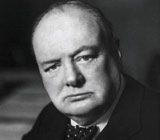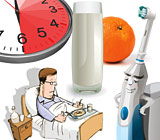
This print is one from an untitled group of designs by Utamaro, published around 1795. It shows a young woman seated on the ground, holding a black lacquered hand mirror and applying lip rouge with the aid of a brush. She is set against a vibrant yellow background and her form is rendered by a series of dramatically sweeping lines. The composition is wonderfully uncluttered - there is nothing in the design which does not belong to the beautification process. If you look at the image below this design, which provides a close-up of her face, you will see that she has black teeth, and the image to the left of that one provides a close-up of the paraphernalia she has been using to apply the dye needed to provide that black lacquered coating. Ohaguro, or teeth blackening, was a common practice amongst married women, with the dye being applied for the first time just before a young bride entered her husband's home. It was also practiced within the Yoshiwara pleasure quarter, where a kamuro (apprentice) who was about to come of age and accept her first customer would collect the ingredients from seven friends and dye her teeth for the first time, just as the soon-to-be bride would collect the ingredients from friends and family before her wedding.

The large round container, half of which is visible on the right-hand side of the composition above, is called a mimidarai, and sitting on top of that container is a thin tray, or watashigane. On top of the tray is the kanewan, the bowl in which the dye is mixed. On the ground to the left of the mimidarai, the brush which has been used to apply the dye to the young woman's teeth is resting atop a porcelain bowl, and to the left of the bowl is a small box of fushi powder.

Fushi powder was made from the gallnuts of the Japanese sumac tree, and the combination of this powder and kanemizu, which was made by fermenting iron filings in an acidic mixture of tea, vinegar and rice wine, produced a black dye which could then be applied to the teeth. Once dry, it provided a rich black lacquer coating. Unfortunately, it faded quickly and the process had to be repeated regularly to maintain a beautiful set of blackened teeth, so no respectable woman who cared about her appearance would go more than three days without applying the dye again.


The teeth-blackening process was labour intensive and the dye was foul-smelling. In order to provide a key, so that the surface of the teeth would hold the dye well, the rind of a pomegranate, or something similar, would be rubbed across the teeth prior to reapplying the dye. The practice gradually died out amongst married women after 1873, when the Empress of Japan, having decided that she would no longer apply the dye, appeared in public with white teeth.


















